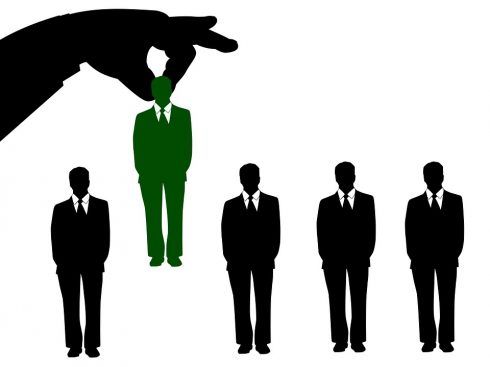
Modern enterprises need to be agile because customers, requirements, the opportunity of data and the capability of technology all provide an endless array of opportunity. Opportunity is everywhere, but everything is not an opportunity. Agile approaches such as Scrum have become more and more popular in response. In a recent survey 58% of respondents said that they are part of an agile transformation. Mass production and project management was the operating model of the last century, while agile has become the operating model of the 21st century. Is everyone right for agile? Are some people more naturally able to work in an agile way? And if that is the case how do you help people that are not natural agile workers to adapt some of their behaviors?
In a recent research project Scrum.org and McKinsey & Company explored this very topic comparing successful agile teams with personality and work value models. You can find the complete report titled, How to select and develop individuals for successful agile teams: A practical guide, here. In this article, I summarize the key findings and share some tips for using this information to help you, your organizations and teams become more agile.
Certain personality traits for product owners and team members are more important than others. What follows is a look at some key traits.
Ambiguity is fundamental
Agility by its very nature is about the unknown, which in turn leads to large amounts of ambiguity in terms of the problem being solved and the solution that is created. As the situation unfolds by frequently delivering, agile teams learn and change their understanding of the problem and solution, as well as how they work.
Traditional working approaches focused on consistent, efficient processes with limited ambiguity. For many workers this provided a safe place with the knowledge of the process being more important than the outcome. It was more important to be on plan than to deliver the right solution. Correctness was assumed if the process ran correctly.
The modern, agile enterprise needs a person who does not require such safety because the problems they face are not predictable or known. For example, even adding a new set of pages to a website is not predictable and may require multiple tests of different locations for the pages, A/B tests of different page structures or differently worded menu items. Instead of either delivering one version or never delivering everything people who can handle ambiguity focus on learning every release.
TIP: Encourage comfort in ambiguous situations and don’t always expect an answer. Sometimes it is just as important to ask new questions and learn.
Being agreeable is actually more important than you expect
For many, being agreeable is seen as a sign of weakness. But, the study found, in building strong agile teams, being able to respond well to others in a positive manner is a key ingredient for success. Being agreeable does not mean that people do not have opinions or will do what everyone wants. Instead, it emphasizes the way that a person responds to a situation. They listen, approach different points of view with interest and create an environment that makes the other person feel welcome or safe.
Environments where everyone is more agreeable tend to lead to increased physiological safety which, as identified by Google when studying high-performance teams, is a key ingredient in success. Transparency is a pre-requisite for agility, which is required when dealing with complex problems and a cornerstone to being able to inspect and adapt.
If people on the team are quick to judge and not agreeable, it is likely that people who avoid confrontation will avoid voicing their opinions and ultimately the team suffers. For example, when providing estimates on a project it is easy to create an environment where everyone follows the lead of the most outspoken or experienced team member. This can result in estimates being wrong when they could have been much improved. In an ‘agreeable’ environment everyone is interested in other people’s point of view and encourage each other with comments like ‘yes, and’, rather than ‘yes, but this is why you are wrong’.
TIP: Build teams of strong-minded, kind, agreeable people who firmly believe that everyone has something to contribute. Balance that with a clear, regular delivery cadence to ensure that progress happens.
Work values are also important when assembling an agile team. Pride in product must be balanced with customer orientation.
In traditional work environments the product and the customer are served by following the process. The process removes the responsibility of the outcomes. In an environment where process emerges in response to the situation there is no process to take responsibility. Instead teams have to focus on knowing what the customer wants and take ownership of the solution they deliver to them. For example, how many times have you been in the situation where to deliver a solution on the original plan you have to cut some capability or feature? When people are interested in the customer, they ask what value those features had to them and look to balancing the needs of the customer and the quality of the product rather than delivering on a plan that may have been created without a complete set of knowledge.
TIP: Look to measure value in terms of the product (quality, changeability, innovation) and the customer (success, happiness, time to value) to drive the right behaviors of the team.
Hiring for the new agile world requires a focus on people not just skills
We are all looking for that perfect hire. A perfect set of skills to deliver faster and of a higher quality. But the reality is that those ‘unicorn’ hires are hard to find, and the unicorn may actually be a donkey. Instead of a focus on finding the right hero, hiring managers need to step outside of their comfort zone and focus equally on the personality of the person being hired. Look to asking questions about their ability to deal with ambiguity, how they work with others in terms of agreeableness and their work values focusing on the product and the customer. These foundational behaviors build the best platform for success.
TIP: When hiring or moving people, balance technical skills with the soft skills and focus on agreeableness, dealing with ambiguity and an external focus.
The reality of building an agile enterprise requires a focus on many different things ranging from process, tools and funding models to how the organization engages with its customers and partners. The people working on teams are at the heart of any change. Many of the skills needed for those team members are the same as today, but with a difference. The McKinsey and Scrum.org study highlights the importance of a set of personality and work values that are different. By putting those behaviors front and center organizations can better navigate the change.






